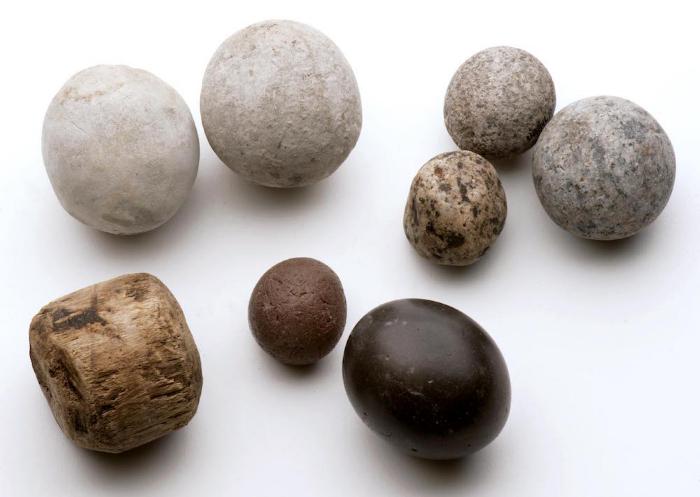Bola, Slingshot — Pelluquq

The word bola comes from Spanish and means ball. People around the world use this term to describe a hunting tool tossed in the air, across the water, or on land to immobilize animals. A bola typically has several narrow lengths of cord tied together and weighted on the ends. The weights may be stone, bone, ivory, or even pieces of metal. A hunter swings the tool in a circle over his or her head, aims, and releases it. With luck, the target becomes tangled in the cords and can be captured.
In Alaska, bolas were once widely used to hunt birds. The Yup’ik made bolas from pieces of ivory attached to woven grass lines with a grip of feathers. As a flock of birds took off from the water, hunters tossed bolas in their path. Inupiat men, women, and children hunted ducks with similar bolas, especially in the spring. But what about the Alutiiq? Did Kodiak’s Native hunters use bolas? Several clues suggest that they did.
Alutiiq Elders recall people hunting with bolas and use the word pelluquq to describe them. This is not a Kodiak term, however. It comes from Chugach Alutiiq and speakers in both Prince William Sound and Kodiak currently use this word for a slingshot. Perhaps the word for bola was applied to this more recently introduced technology.
Kodiak’s archaeological sites hold another clue. Small round pebbles are a common find in Alutiiq settlements. People collected sets of similarly sized stones. Why? Some think the stones were game pieces, tossed by players at targets. Others suggest that the stones were used to make bolas.
